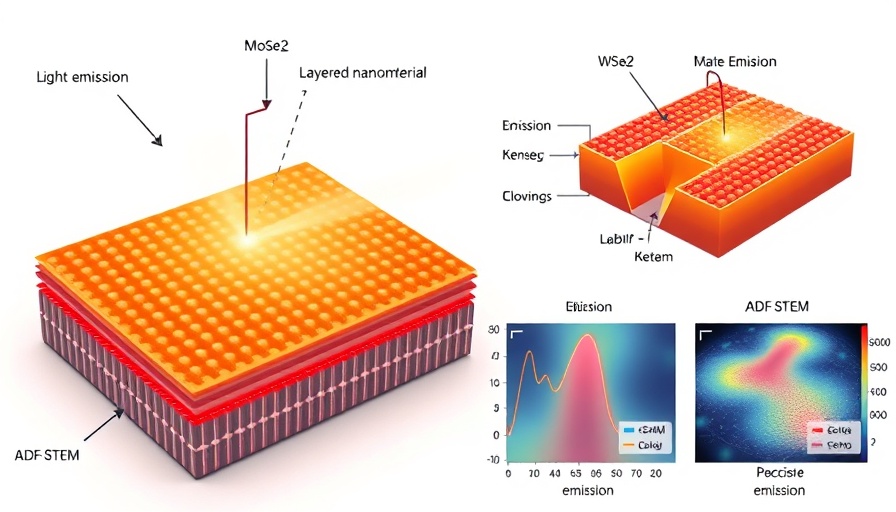
Nanodots: The Future of Light Emission for Cutting-Edge Technology
Recent breakthroughs in nanotechnology are showing promise for a wide range of applications, particularly in enhancing screen resolution and advancing quantum computing. Researchers from Penn State University and Université Paris-Saclay have found a novel method to control light emission at a microscopic level by embedding molybdenum diselenide nanodots into tungsten diselenide, all through the innovative use of two-dimensional (2D) materials. This research paves the way for sharper displays and potentially transformative advancements in sophisticated quantum devices.
The Quantum Leap: Understanding Nanodots
At the heart of this research is a concept known as quantum confinement, where tiny structures of material emit different wavelengths of light depending on their size. The smaller the nanodot, the higher the frequency of the emitted light. In this study, scientists discovered that nanodots under 10 nanometers emitted light at noticeable higher frequencies. This serves as an essential pivot point in improving the optical properties of materials significantly.
The Promise of Light Manipulation
By embedding these minuscule nanodots in 2D materials, researchers can fine-tune light emission more precisely than before. As Nasim Alem, the lead investigator, states, "If you have the opportunity to have localized light emission from these materials that are relevant in quantum technologies and electronics, it’s very exciting." This control allows the production of devices with improved specifications, leading to clearer visuals in displays and advancing capabilities in quantum computing.
Practical Applications: From Displays to Quantum Computing
One immediate application of this technology lies in the enhancement of OLED displays. Each pixel in an OLED screen has its own light source, and with improved technology at the nano-level, manufacturers can achieve more vibrant colors and deeper contrasts. The potential for making images sharper and colors more true-to-life directly aligns with increasing consumer expectations for high-quality entertainment experiences.
Furthermore, the use of excitons—highly mobile pairs of charged particles—offers a futuristic edge in quantum computing systems. These excitons can allow for faster processing speeds while simultaneously increasing security; a critical component as the industry moves toward more data-intensive applications.
Challenges in Material Durability and Scalability
As with any emerging technology, the durability and scalability of these 2D materials present potential challenges. Factors such as temperature fluctuations, humidity, and mechanical stress can jeopardize the long-term reliability of devices composed of such materials. Future research must address these aspects to ensure practical and scalable implementations of this technology.
Looking Ahead: Innovations on the Horizon
The research team envisions that this is just the beginning. "We can leverage lessons learned from studying these nanodots to refine our approach and develop advanced applications beyond displays and computers," Alem further elaborates. By continuing to explore how atomic structure influences light emission, researchers may soon realize exciting new possibilities across various scientific domains.
Conclusion: A Call to Innovate
As businesses in technology-driven sectors continuously strive for innovation, understanding the implications of advances like these is crucial. Embracing such cutting-edge research could be a game changer in both product development and market strategy. Those in the tech and marketing industries should keep an eye on these developments to explore how such advancements could influence their operations and future strategies.
For further insights and to stay ahead in this rapidly evolving field, consider subscribing to industry newsletters and joining forums where experts discuss these technological advances. Your eagerness to learn and adapt will place you ahead in the ever-changing landscape of technology.
 Add Row
Add Row  Add
Add 




Write A Comment